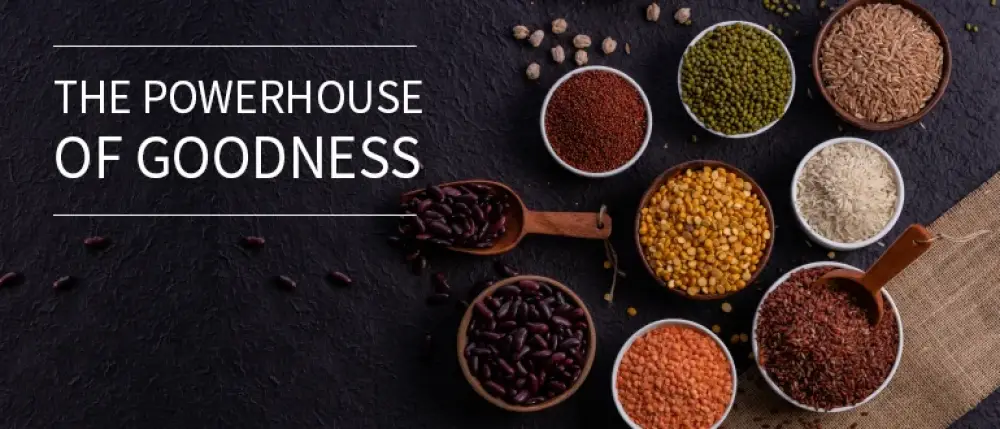Subscribe to get weekly insights
Always stay up to date with our newest articles sent direct to your inbox
Published on 23 Oct, 2023
Updated on 23 Oct, 2023
6131 Views
4 min Read

Written by Care Health Insurance
favorite0Like
favoriteBe the First to Like
You can’t miss out on a hot steaming ladle of dal served at least in one meal of the day if you are an Indian staying in whichever part of the world. As you know, dal, also called lentils, has been a staple diet across India and many other countries and comes in various varieties. Beyond its delectable taste and versatility, it is a nutritional powerhouse offering a wide array of health benefits. While being a comfort food for Indians, dal holds a special place in Indian kitchens due to its rich nutrient profile.
In this article, we will highlight the incredible benefits of incorporating dal into your meal and why it is hailed as a superfood.
Various varieties of dals are used in Indian kitchens, but the five most common types of dals are cooked frequently for their plenty of health benefits. They are-
Moong dal and its varieties are commonly used lentils, from tasty curries to desserts. Whole moong dal is a protein-bound sprout packed with dense nutrients, such as magnesium, copper, manganese, phosphorus, potassium, folate, and zinc and an excellent protein and dietary fibre source. It also aids in lowering cholesterol levels, reducing heart disease risk and regulating blood sugar levels.
Furthermore, it is one of the most easily digestible pulses of all dals and is recommended mainly by dieticians in their diet plans as it is easily digestible.
Urad dal adds a rich and delicious taste to the famous dal, dal makhani. It is also incorporated in dishes like dosa, idli, vada and dosa and is loaded with iron, calcium, protein, potassium and vitamins A and C.
Moreover, urad dal is an insoluble dietary fibre that promotes digestion and improves and strengthens bones. It also boosts energy levels, controls blood sugar levels, and maintains hair and skin health.
Toor dal, commonly known as arhar or sambar dal, is easily found in the Indian Kitchen. It is also the staple meal among South Indians, loaded with proteins, iron, potassium, magnesium, folic acid, B vitamin, and iron.
It is known to be highly beneficial for pregnant women to prevent neural tube congenital disabilities.
Masoor dal is another commonly used lentil in Indian kitchens. A highly beneficial dal like masoor dal goes great with vegetables as it is rich in protein, magnesium, calcium, folate, and vitamin B vitamins, which keep your overall health in fine fettle.
It also keeps skin healthy and prevents acne while regulating blood sugar levels and boosting immunity.
Chana dal is rich in nutrients and can make delectable dishes like fritters, dal, soups, curries and salads. It is incorporated with zinc, protein, folate and fibre.
Being loaded with fibre helps stabilise blood glucose levels, lowers blood sugar levels, and reduces heart disease risk. It also helps promote bone development while strengthening them.
>> Also Read: 6 Sources of Iron to Include in Your Diet
In all the households in India, regardless of the region, dal is always served alongside rice or chapati and other dishes. Being a powerhouse of goodness, dal is inevitable in Indian meals. Here are the benefits of dal that you must know-
Dal adds nutritional value to your meals as it is-
Pulses are indeed nutritious, but you must also know how to healthily cook dal to ensure you gain the maximum benefits from consuming dal. To cook it healthy, you must avoid excessive oil or spices as these ingredients are not suitable for health. You can, however, use ghee or olive oil for tadka. You can also include some black pepper or green chillies to enhance flavour. You must use everything in moderation to relish the taste of dal and gain its benefits.
Once you start incorporating dal into your diet, you will experience impactful results that enhance your health. The abundance of nutrients in dals ables weight management, supports heart health and controls blood sugar levels. With the diversity that dal brings to the culinary world, its immense benefits promote a healthier lifestyle.
Disclaimers: The above information is for reference purposes only
favoriteBe the First to Like
शुगर कंट्रोल कैसे करे? जानें, डायबिटीज में क्या खाना चाहिए Care Health Insurance in Health & Wellness
Thyroid : मामूली नहीं हैं महिलाओं में थायराइड होना, जानें इसके लक्षण और घरेलू उपचार Care Health Insurance in Diseases
हाई ब्लड प्रेशर को तुरंत कंट्रोल कैसे करें? देखें इसके उपाय Care Health Insurance in Diseases
प्लेटलेट्स की कमी के लक्षण, कारण और इलाज क्या है Care Health Insurance in Diseases
Dehydration: What Your Body's Trying to Tell You Care Health Insurance in Health & Wellness
Breaking Down Neurosis vs Psychosis—Meaning, Differences, & More Care Health Insurance in Mental Health
Is Black Pepper Good for You? 11 Health Benefits of Fiery Spice! Care Health Insurance in Diet & Nutrition
What is IBS? Signs, Triggers & Solutions that Work Care Health Insurance in Diseases